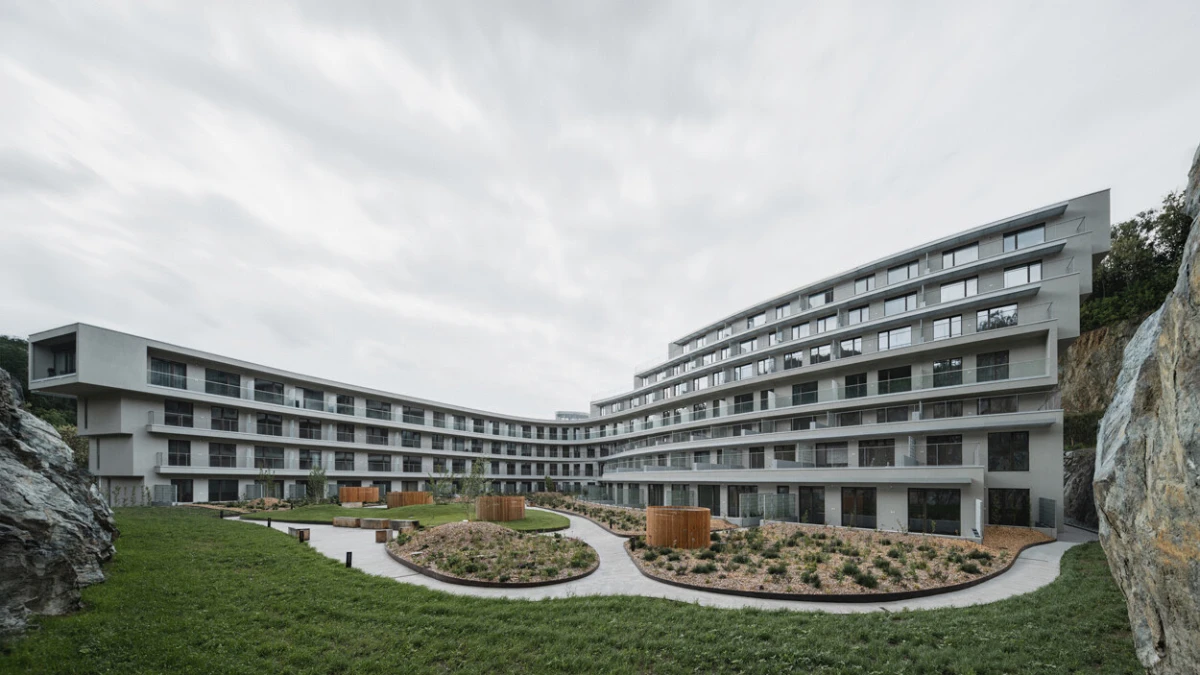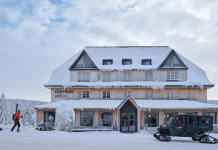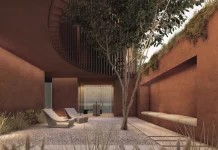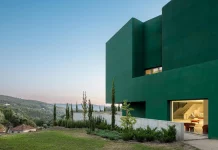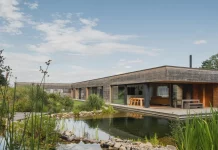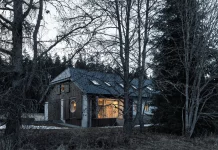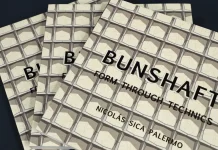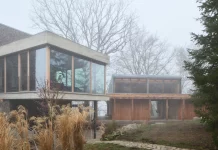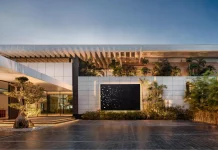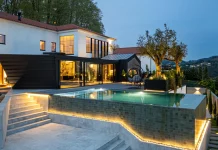Our cities are hungry for land. Yet, on the edges of urban centers lie scars from our industrial past—abandoned quarries, forgotten factories, and dormant brownfields. These sites are often seen as wastelands. But what if they represent our most significant opportunity? The “Diorit” residential building, a landmark sustainable architecture project by Architekti DRNH, answers this question with profound elegance. Situated on a former quarry in Brno, Czech Republic, this project redefines brownfield redevelopment, proving that urban growth can heal landscapes rather than consume them.
This is not just another apartment building. It is a powerful statement about urban renewal and ecological stewardship. The architects saw a dynamic ecosystem in a place others had discarded. Nature had already begun reclaiming the industrial void, with rare species finding a sanctuary. Instead of erasing this progress, Architekti DRNH chose to collaborate with it. They envisioned a residence that would not only provide modern housing but also amplify the site’s biodiversity. This is a story of how thoughtful design can transform an environmental liability into a celebrated asset.
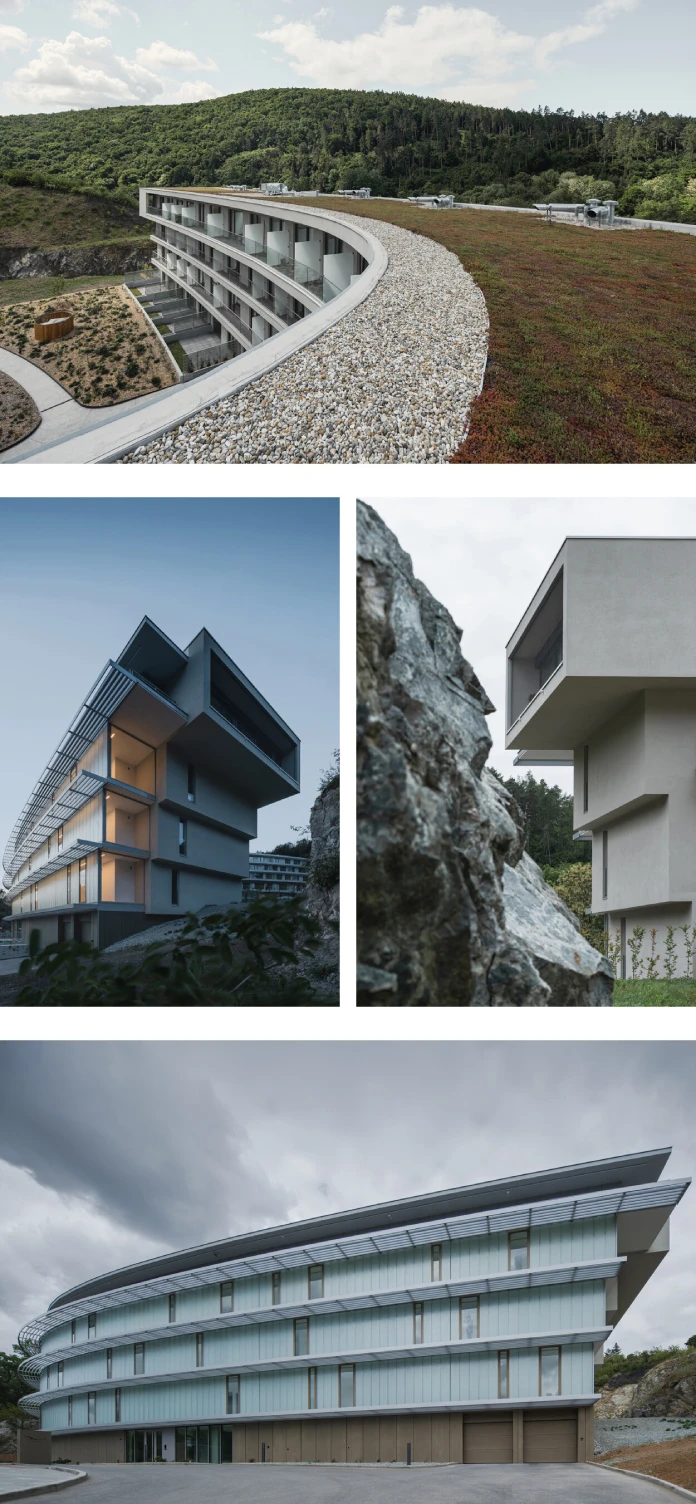
From Industrial Scar to Urban Sanctuary: The Diorit Vision
Every site has a story. The Diorit residence sits on the border of Brno’s Komín and Bystrc districts, in the narrow valley of the Svratka River. For years, it was a diorite quarry, a place of extraction. After its abandonment, nature became the primary architect, slowly transforming the harsh environment into a haven for unique flora and fauna. This natural regeneration presented a unique challenge and an incredible opportunity. How can we build in a way that respects and enhances this comeback?
The Genius of the Place
The team at Architekti DRNH recognized this inherent potential. They didn’t just see abandoned land; they saw a complex habitat. The project was born from a proactive vision to develop the brownfield, remove lingering environmental burdens, and protect the location’s rich biodiversity. Named after the mineral once mined there, the Diorit building champions the idea of sustainable urban development. Consequently, it pushes back against the endless sprawl that consumes our open landscapes.
A Proactive Approach to Urban Renewal
Securing support for such an unconventional project required conviction. The architects successfully persuaded local authorities, state administrators, and the investor of the project’s profound relevance. This collaborative success story demonstrates a crucial shift in thinking. It shows that redeveloping former industrial areas is not just viable but essential for the health of our cities and the preservation of our countryside.
Sustainable Architecture That Breathes: Design and Form
The Diorit building does not impose itself on the landscape. Instead, it enters into a dialogue with it. Its form is a direct response to the challenging terrain of the former quarry. A street-facing section acts as an acoustic shield, buffering residents from urban noise. This facade then flows gracefully into a courtyard structure that mirrors the morphology of the original quarry walls, with their dramatic slopes and terraces.
Responding to the Landscape
The architecture masterfully blends into its surroundings. For example, a palette of natural plaster shades, milky profiled glass, and a rhythm of smooth curves creates a harmonious visual. This effect is amplified by extensive greenery integrated into the building itself. The result is a structure that feels both born of the quarry and reclaimed by nature. Furthermore, the underground garage even leaves parts of the natural rock walls exposed, preserving a tangible connection to the site’s history.
Cultivating Urban Biodiversity
The landscape design is a cornerstone of this sustainable architecture project. It meticulously preserves existing vegetation on the rock walls while introducing new plantings to foster greater biodiversity. This creates crucial habitats for birds, insects, and small mammals, thereby strengthening the local ecosystem. Above the underground garage sits a recreational green roof park. This lush space seamlessly connects with the quarry’s vegetation and helps create a pleasant microclimate for the entire block. This is how you design buildings that enhance biodiversity.
Inside Diorit: A Blueprint for Modern, Eco-Conscious Living
The project’s thoughtful design extends inward, offering a diverse range of living spaces. The building hosts everything from compact studios to spacious four-room apartments, catering to a mix of residents. Most apartments are oriented toward the shared park via green terraces, offering serene views of the quarry’s unique natural environment. In addition, larger apartments at the ends of each floor feature expansive roof terraces with stunning views across the Svratka valley.
Smart and Sustainable Systems
Diorit is a model of an eco-friendly apartment building, achieving a Class A energy efficiency rating. This high level of sustainability translates into low operating costs and a minimal environmental footprint. Heating and cooling are managed by highly efficient heat pumps that draw energy from deep wells. Furthermore, an intelligent water management system collects rainwater in underground tanks for irrigating the gardens. During heavy rainfall, excess water is discharged directly into the river, alleviating pressure on the public sewer system.
Every apartment is also equipped with a smart home server. This technology gives residents control over the ventilation system, underfloor heating, and cooling, blending modern convenience with resource conservation.
A New Precedent for Urban Development
The Diorit residence by Architekti DRNH is more than just a successful architectural project. It is a replicable model for the future. It proves that we can build beautiful, comfortable, and modern homes on land once considered unusable. This project demonstrates that sustainable architecture can actively heal our landscapes, protect them from urban pressure, and deliver lasting aesthetic and ecological value.
What if every city looked at its abandoned industrial sites not as problems to be solved, but as opportunities to innovate? The Diorit building challenges developers, architects, and city planners to think more creatively and responsibly. It stands as a testament to the idea that the most forward-thinking solutions are often found in the places we have left behind.
All images © Architekti DRNH and Petr Polák. Feel free to browse WE AND THE COLOR’s Architecture category for more inspiring projects from around the globe.
Subscribe to our newsletter!

